Can an insulated wire be used to make a electromagnet? Will there be any difference in strength of the magnet if I use an uninsulated wire instead? By uninsulated wire I mean this:
-
1How do you intend to use an uninsulated wire? Electromagnets are usually made using an insulated one (enameled, which might look like bare) – Eugene Sh. May 22 '19 at 16:14
-
1@EugeneSh. Even I don't know. Please see the question edit. Isn't that a uninsulated wire – user29463 May 22 '19 at 16:19
-
1The wire in your pic is almost certainly *not* uninsulated. It is probably 'magnet wire', which has a thin, often nearly transparent, layer of insulating enamel coating. – brhans May 22 '19 at 16:54
-
3is… is that 11 (in words: ELEVEN) windings of what seems to be 0.5mm² diameter wire? Fed by a low-impedance D-cell alkaline battery? That is going to get *hot*, because the ohmic resistance of thick copper is very low, and because the electromagnet will (after a few microseconds after connecting this thing) not pose much impedance to the current flowing through the wire. I wouldn't be the one holding the cable like that! (Fun fact: I have enough straight streaks burnt into my thumbs' finger prints from touching cables that I thought were cold enough to touch.) – Marcus Müller May 22 '19 at 17:47
-
1And if you want a strong magnet, you want a lot of turns; and a closed path for the magnetic field, like a horseshoe, see https://en.wikipedia.org/wiki/Electromagnet#Magnetic_circuit_%E2%80%93_the_constant_B_field_approximation When I was a kid, I wound a straight iron rod with hundreds of turns, and I used a power supply a lot more powerful than a D battery ... unimpressive power. – Mattman944 May 22 '19 at 22:12
-
@MarcusMüller Note he is keeping a piece of paper between the thumb and the contact – user29463 May 25 '19 at 20:01
-
@user29463 which doesn't help with burning your fingers much, but it's a start. – Marcus Müller May 26 '19 at 12:13
5 Answers
Well.. you COULD use uninsulated wire but then you might as well just use a solid copper rod or tube and you would require unreasonably low voltages and unreasonably high currents to get the same power/field strength since you would basically be trying to make a magnet out of just a straight, single solid strand of wire or maybe just one turn of wire. All current flow does produce a magnetic field after all, but it's impractical.
Not all insulation is a rubbery or plastic material. The magnet wire which is typically used in things like transformer, motor, and electromagnet coils is insulated with a thin, hard laquer or enamel. It's made to be very thin so you can squeeze as many turns as possible into the same volume.
- 54,733
- 4
- 67
- 153
Isn't that a uninsulated wire
It could be but if so it is a dumb usage. The only reason that would work with an un-insulated wire is more 'by accident'.
The accident in this case is that with an un-insulated wire the screw is shorting out the copper coil. But because copper has a much lower resistance and the screw is probbably not making very good contact, most of the current is still going through the copper and giving still a magnetic field.
But as others will tell you: you should NOT use un-insulated wire to wind a coil.
- 14,212
- 2
- 15
- 41
Normally an insulated wire is used to make an electromagnet. The strength of electromagnet using insulated wire will be more than the one made with non insulated wire considering the batter size, wire thickness, number of turns, and the core remains the same. The reason is if the wire is non insulated then the electron may move straight through the core (nail in your experiment) rather than going in loop creating the more powerful magnetic field. You may check out this simple experiment. https://youtu.be/Yepl7nMWom8
- 8,749
- 4
- 36
- 58
- 31
- 1
Magnetic fields penetrate insulation, so if you create a magnetic loop with insulated wire, the insulation will create wider gap between wires if stacking them. Most wire suited for electromagnets is insulated, the insulation is hard to see because it is a thin lacquer/enamel coating on the wire. If you don't use insulation, you run the risk of shorting the current on the coil.
You can use bare 20AWG wire to make an electromagnet, but probably not the best idea as you have to rely on oxide layers that insulate or wire spacing to keep current from running straight from one coil to the next or through the nail.
- 75,799
- 36
- 80
- 208
The only reason insulated wires are used is to stop the turns shorting out if they touch each other. Bear in mind that field strength is proportion to the current and to the number of turns. So if you want small currents you increase the number of turns.
- 13,425
- 9
- 53
- 111
